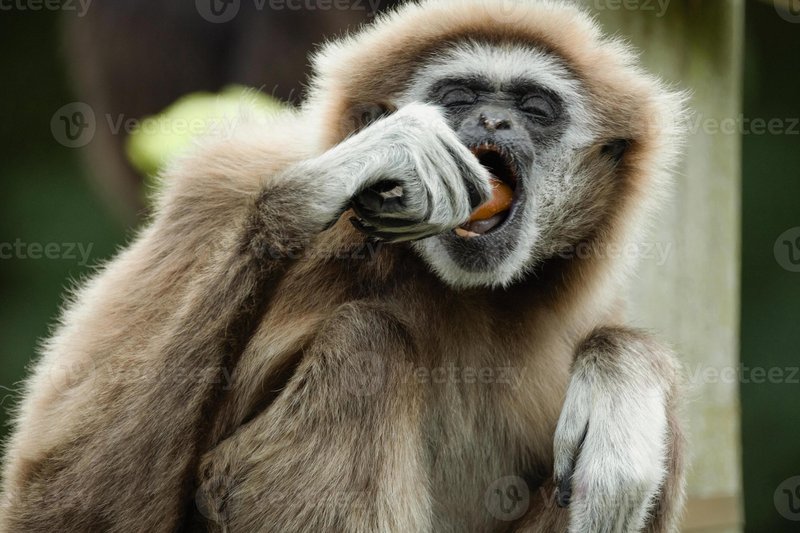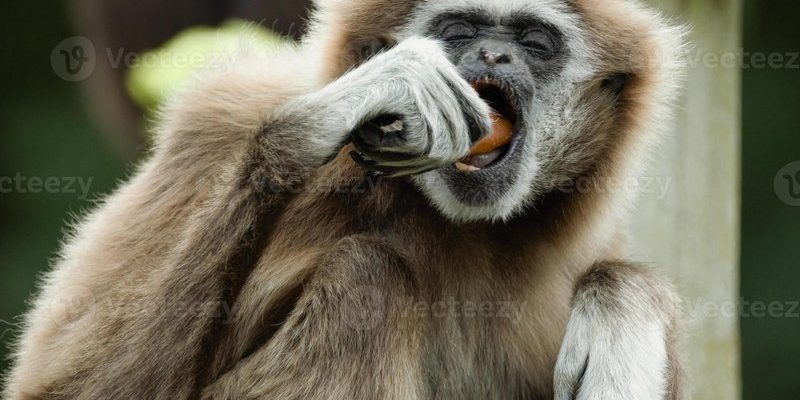
So what’s the deal with these lesser-known primates? You might be surprised to learn that gibbons are not just small monkeys but belong to a distinct family known as the Hylobatidae. This article will clear up some common myths and help you appreciate these incredible animals. Let’s break down just what makes gibbons so special and separate fact from fiction.
Myth 1: Gibbons Are Just Monkeys
One of the biggest misunderstandings is that gibbons are simply small monkeys. Here’s the thing: gibbons are not monkeys at all; they’re apes. While both monkeys and apes belong to the primate order, they have significant differences. Monkeys typically have tails, while apes, including gibbons, do not. This distinction is essential because it affects their behavior, anatomy, and even their social structures.
To visualize it better, think of monkeys as more ground-dwelling creatures. They often move through their environment using all four limbs, often leaping around. In contrast, gibbons are more like aerialists, swinging from branches with their long arms—making them built for an acrobatic lifestyle. So, when we say gibbons are not monkeys, it’s crucial to remember they are part of the ape family, which also includes chimpanzees, bonobos, gorillas, and orangutans.
Myth 2: Gibbons Are Lonely Creatures
Another common myth is that gibbons prefer to live solitary lives. You might picture them sitting alone in trees, isolated from the rest of the world. However, this couldn’t be further from the truth. Gibbons are actually quite social and live in family units, typically consisting of a breeding pair and their offspring.
These family groups are incredibly close-knit. They communicate with each other through a variety of vocalizations, often displaying remarkable singing abilities. Their songs can be heard from miles away and not only help strengthen family bonds but also signal their territory to other groups. So, if you thought gibbons were solo artists, it’s time to reconsider; they’re more like a tight-knit band, harmonizing together in the trees.
Myth 3: Gibbons Are Just Small Versions of Other Apes
You might be wondering if gibbons are simply miniature versions of their larger ape cousins, like gorillas or orangutans. In reality, gibbons have their own evolutionary path that makes them unique. While they share a common ancestor with other apes, gibbons diverged from that lineage millions of years ago, developing distinct characteristics.
Gibbons are known for their incredible arm length compared to their body size, which allows them to swing effortlessly through trees—a form of locomotion called brachiation. This is different from how larger apes move. Gorillas and chimpanzees often walk on their knuckles or use quadrupedal movements. So, viewing gibbons as smaller relatives ignores the fascinating adaptations they’ve developed over time.
Myth 4: All Gibbons Are the Same
Another misconception is that all gibbons are identical. In reality, there are several species of gibbons, each with distinctive traits. For instance, the white-handed gibbon has a striking appearance, with its pale fur and darker face, while the siamang is known for its larger size and distinctive throat pouch used for amplifying its calls.
This diversity among gibbons is impressive. They range from being light-colored to darker shades and may even have varied vocalizations and behaviors depending on their environment. Their habitats can vary widely, from dense tropical forests to subtropical woodlands, influencing their physical characteristics and lifestyle.
Myth 5: Gibbons Are Not Endangered
A common misconception is that gibbons are thriving and not at risk of extinction. Unfortunately, this is not the case. Many gibbon species are endangered due to habitat loss, poaching, and the illegal pet trade. Deforestation is a significant threat, as it destroys the forests where gibbons live and swing from tree to tree.
You might be surprised to learn that some gibbon populations have declined by over 50% in recent decades. Conservation efforts are crucial in protecting these remarkable animals and their habitats. By spreading awareness and supporting organizations focused on saving gibbons, each of us can play a part in their survival.
Myth 6: Gibbons Don’t Play a Role in Their Ecosystem
Some individuals think gibbons are just hanging around without any impact on their environment. However, gibbons play a significant role in their ecosystems, primarily as seed dispersers. As they move through the trees, they consume fruits and then excrete the seeds in different locations. This helps promote plant growth and contributes to the health of their habitat.
Imagine a gibbon as a natural gardener, helping to cultivate the forest as it swings around. By keeping trees healthy and thriving, gibbons indirectly support a myriad of other species that rely on those trees for food and shelter.
In Closing
Understanding gibbons can shift our perspective on these unique primates. By clearing up these common myths, we can appreciate their role in the animal kingdom more fully. Gibbons are not just small monkeys or lonely creatures; they are complex, social, and significant players in their ecosystems. As we continue to learn and advocate for their conservation, we ensure that future generations can enjoy the beauty of gibbons swinging through the trees. So next time you hear about gibbons, remember they’re not just entertaining acrobats—they’re vital to their world.

